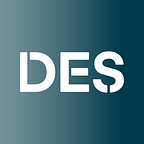Identity and Authenticity in the Workplace
You may have seen or heard the phrase, “Bring your authentic self to work.” You may have wondered, What does that mean? Or, Do I feel safe being myself? How do we stay true to ourselves in workplaces where “fitting in” and “playing by the rules” seem to be important aspects of the culture?
Identity is the sense a person has of themselves. It’s a result of experiences, memories, relationships, beliefs, values, ethnicity, cultures, gender, sexual orientation, strengths, self-image, and sense of belonging.
A healthy identity can be thought of as one where you know who you are, you accept yourself, and you believe you have value. A healthy sense of identity increases our resilience, which helps us navigate tough times. It makes us more likely to feel confident, independent, respected, and accomplished. It increases our sense of belonging and connectedness. When our identity is marginalized or feels threatened, our well-being is impacted. Stress is a common outcome.
Identity and authenticity in the workplace
Washington state currently defines authenticity as ”acting in alignment with your identity.” In her 2018 TEDx Talk, “The Authenticity Paradox,” Professor Herminia Ibarra of the London Business School describes authenticity as acting in our own authority to author ourselves. She describes authenticity as the outcome of “a life-long process of learning about yourself.”
This perspective of growth is shared by Suezette Robotham in her 2015 TEDx Talk, “Uncovered: Finding & Being Authentically Myself at Work.” She describes her process of becoming herself at work in five steps:
- Reflect on what you need to succeed at work. Identify your motivations, your strengths, and the areas you want to develop.
- Build a relationship with your manager. Base the relationship on who you are and what you need, so that person is invested in you. Also, seek to understand your manager’s motivations.
- Understand your perception of risk. What fears keep you from being yourself in the workplace? What potential consequences cause concern for you? Learn how you can begin to understand and work through fears of not fitting in.
- Connect with people around you to keep you honest on your professional journey.
- Know when it’s time to leave. If you’re not getting everything you need to be your best professional self in the workplace, it can be a sign that change is needed.
“Covering” reduces authenticity
In the same talk, Robotham says, “Nothing can prepare you for showing up to an organization on your first day of work and realizing that who you are is not who you get to be on a regular basis.” She describes the phenomenon of covering — hiding a portion of your identity in the workplace in order to fit in. 61 percent of people have covered in the workplace. The percentage increases for marginalized or minority identities.
In her 2020 TEDxSeattle talk, Jodi-Ann Burey notes that covering requires energy, and that for people of marginalized or minority identities, true authenticity may come at the cost of professional advancement and well-being. “The work to shift culture is designed to cost us our own mental and physical health,” she says. “It’s much easier to be who you are when who you are is all around you.”
Practicing authenticity
Authenticity is essential for meaningful relationships at work. It’s also associated with increased well-being and job satisfaction. However, we’ve also seen that bringing your authentic self to work carries risk, and that risk is greater for some people. How do we bridge that gap?
In a 2018 article for Black Enterprise, professional coach L. Michelle Smith summarizes advice on practicing authenticity from four Black women in leadership.
- Know who you are.
- Learn when and how to bring your strengths to the fore.
- Know the value you bring to the table.
- Align your efforts with your organization’s goals.
It’s important to understand the role of identity and authenticity in your professional growth. It’s just as important to recognize the role your leadership has in establishing culture and a sense of belonging. Consider accessing EAP’s counseling and referral services if:
- You’re struggling with identity or sense of self.
- You don’t feel safe being yourself at work.
- You want to improve relationships with coworkers or supervisors.
In the words of Suezette Robotham, “Imagine the opportunity you would create if people could come and lead authentically as themselves at work.”
Subscribe to the EAP employee newsletter to get articles and updates by email.
The Washington State Employee Assistance Program (EAP) is a free, confidential program created to promote the health, safety and well-being of public service employees. EAP provides counseling and other resources to support employee well-being, address workplace concerns, and help with legal and financial issues. Reach out to EAP online or call 877–313–4455. To find out if the Washington State EAP serves your agency or organization, contact your supervisor or human resources department.
